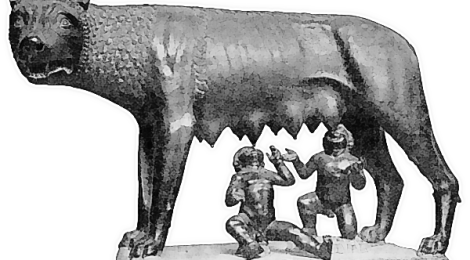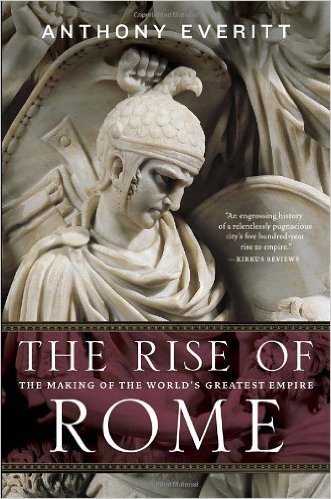
Review of Everitt’s Rise of Rome (Part One)
Review of Anthony Everitt’s Rise of Rome (Part One)
This internet historian began reading a new book titled, The Rise of Rome: The Making of the World’s Greatest Empire, written by Anthony Everitt, which is, of course, about the rise of the Roman Empire. Often, when reading a book or article about the rise of the old, Republican Rome, thoughts turn to other empires, whether truly “Imperial” (i.e. with a monarch of some sort), or the “Republican” sort of empire (like the United States or France after 1871), and what it means for a nation to create and hold onto their empire. My goal in this article (and the articles to come) is to write down my impressions of this book as I read through it, provide commentary, and perhaps to see kernels of truth in how the lessons of an early, republican Rome may apply to the U.S. and the world today.
Anthony Everitt, a veteran historian (see the list of books by Anthony Everitt) is a very good writer. This is evident from the first few pages, as he explains the origin myths of the city and people of Rome. He begins with a look at a well-known historical event wrapped up in myth; the Fall of Troy. Everitt deftly explains how this ten-year war and subsequent events relates to the origin of Rome and the influence of historical and mythical figures such as Aeneas of Troy (for which Virgil’s Aeneid was named), Dido of Carthage, and the twins Romulus and Remus. The author weaves a tale that attempts to separate the myths of Rome’s founding from the possible facts. For instance, Roman legend says that the twin boys who would found Rome were left to die as babies, but were suckled by a she-wolf who save their life until they were found by a shepherd. Everitt explains how the myth may have been built around a real-life political drama. The twins were part of a ruling family of an Italian city-state named Alba Longa, and were taken by their grandfather, Numitor, who had been overthrown by his own brother. Numitor, accordingly, hid his grandchildren from his brother, Amulius (the king), to protect them. According to this tale, Numitor gave the twins to a shepherd named Faustulus and his wife. The wife was referred to as a “Lupa,” literally meaning “she-wolf,” which in local parlance was a slang term for a prostitute. Thus, a She-Wolf did take care of the twins, just as the legend says.
This is an example of how Anthony Everitt explains the origins of the Roman state. After the tale of the twins, he weaves his story of the conflict between Romulus and Remus, showing the reader the myths along with the likely facts that may have actually occurred. It is enlightening to read a classical historian with the ability to truly write for the modern reader.
As of this writing, we are only on chapter 3, but by now we have seen the first few generations of Rome, including the capture of the Sabine women, and the heroic deeds of the Horatii who had fought the Curiatii of Alba Longa. The next portion of this book deals with the Etruscans and the true beginning of Roman expansion.
We will update our progress through this very interesting book as time allows. As of this point, it is a book well worth picking up.

